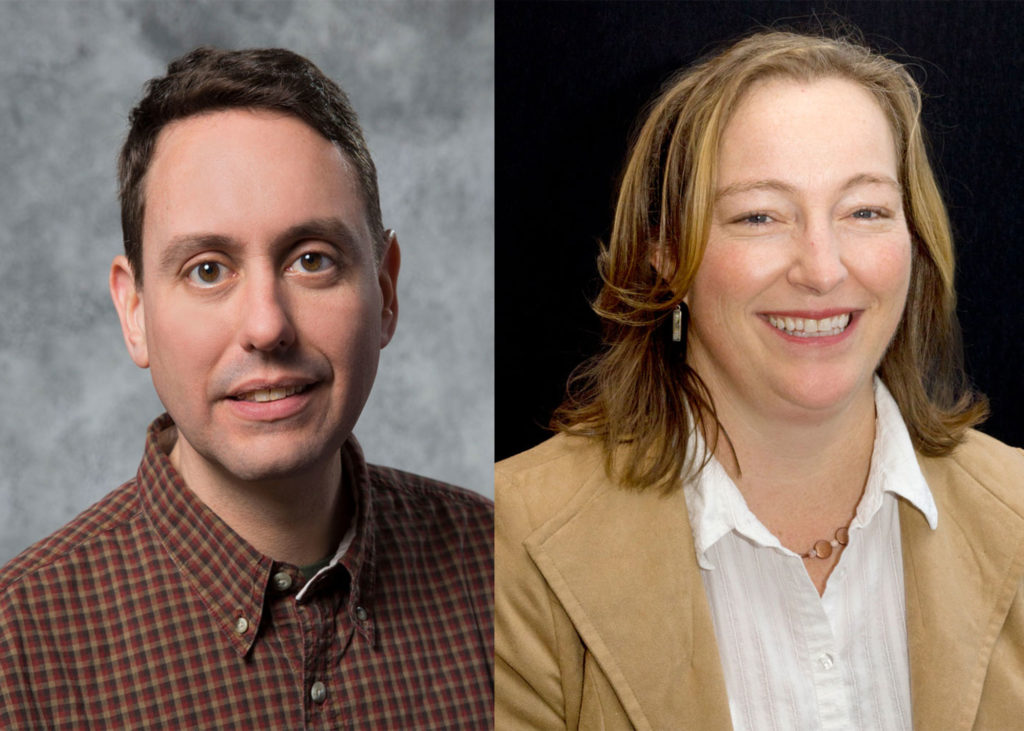Associate professor Lora Perkins and assistant professor A. Joshua Leffler of the South Dakota State University Department of Natural Resource Management have been awarded the Bradshaw Medal from the Society for Ecological Restoration. The international award, named after British ecologist and restoration pioneer Tony Bradshaw, honors scientific papers that significantly advance the field of restoration ecology.
Ecological restoration seeks to create conditions that will help put a damaged, degraded or destroyed ecosystem on the path to recovery, according to the Society for Ecological Restoration.
The SDSU researchers’ paper, published in the November 2018 issue of Restoration Ecology, proposes the use of a triangle as an organizing framework for restoration projects. The restoration triangle suggests that restoration should take into account the target species, their interactions with existing species and the environmental conditions at the restoration site to increase the project’s probability of success.
Stephen Murphy, editor-in-chief of Restoration Ecology, said, “This award is given only to the freshest, most innovative papers. The paper by Drs. Perkins and Leffler is a landmark in that it takes three reasonably well-known drivers of restoration ecology and derives a concise explanatory approach–that’s what we mean by ‘theoretical framework’ in science, for action to enhance both goal-setting and successful outcomes. ”
The researchers will receive a monetary award and present their research as part of the SER’s monthly webinar series next year. Their research is supported by the U.S. Department of Agriculture’s National Institute of Food and Agriculture through the Agricultural Experiment Station at South Dakota State University.
Considering three aspects of restoration
The overall goal of the proposed restoration triangle is to generalize theoretical understanding within the field and make it more applicable for boots-on-the ground restoration.
“Looking at restoration from a holistic view can help practitioners avoid problems and increase the success of their restoration efforts,” Perkins said. “The restoration triangle is a simple conceptual, and even visual, model that reminds practitioners to pay attention to all the factors.”
The paper is not about breaking new ground, but rather pulling together disparate components of restoration ecology, Leffler said. “It’s not a paradigm shift but taking multiple paradigms and putting them into the larger whole—and encouraging people to think about restoration in that way.”
For instance, he explained, “One side of restoration comes to us from engineering—site remediation, fixing soil problems and changing the hydrology. These are big issues that civil engineers might think about, but they address just one piece of the restoration triangle.
“This approach is not particularly focused on the actual species that are going to come into that system and the biological interactions that are going to be necessary for those species to be successful in the restored site,” Leffler continued.
Perkins said, “Another side of restoration could be biologists looking at restoring a threatened or endangered species. These sorts of restoration might need to consider a broad suite of environmental or landscape conditions as well as the specific genetics of their target species.”
Making restoration triangle flexible
A wetlands restoration project, by definition, should address the target species, their interactions with existing species and the environmental conditions.
“You must have the correct environment or hydrological regime to make a wetland—hydric soils to support the target species hydrophytes that can live in the wetlands,” Leffler said. “Insects and animals also play a role in the ecological function of the wetlands. Fish-rearing sites are dependent on the insects using the wetlands system. The insects depend on the plants and fishing birds will not use wetlands unless there are fish in it.
“Though we need to consider all three factors, all three may not be equivalent in each situation,” he continued, noting that is why the researchers made the angles and lengths of the triangle sides adjustable.
“In some cases, the environment may require more attention or sometimes the living things do,” Perkins added.
Original post https://alertarticles.info
